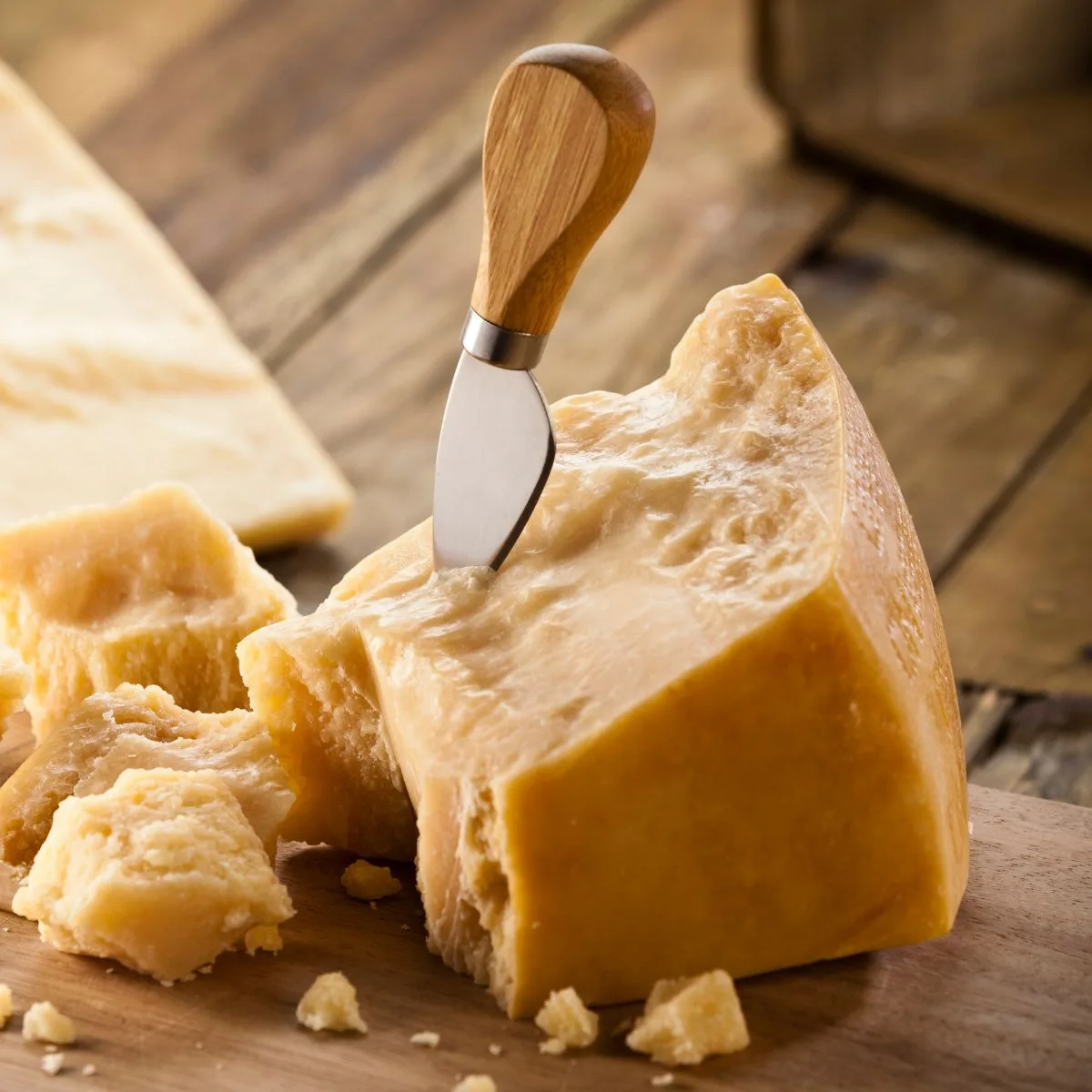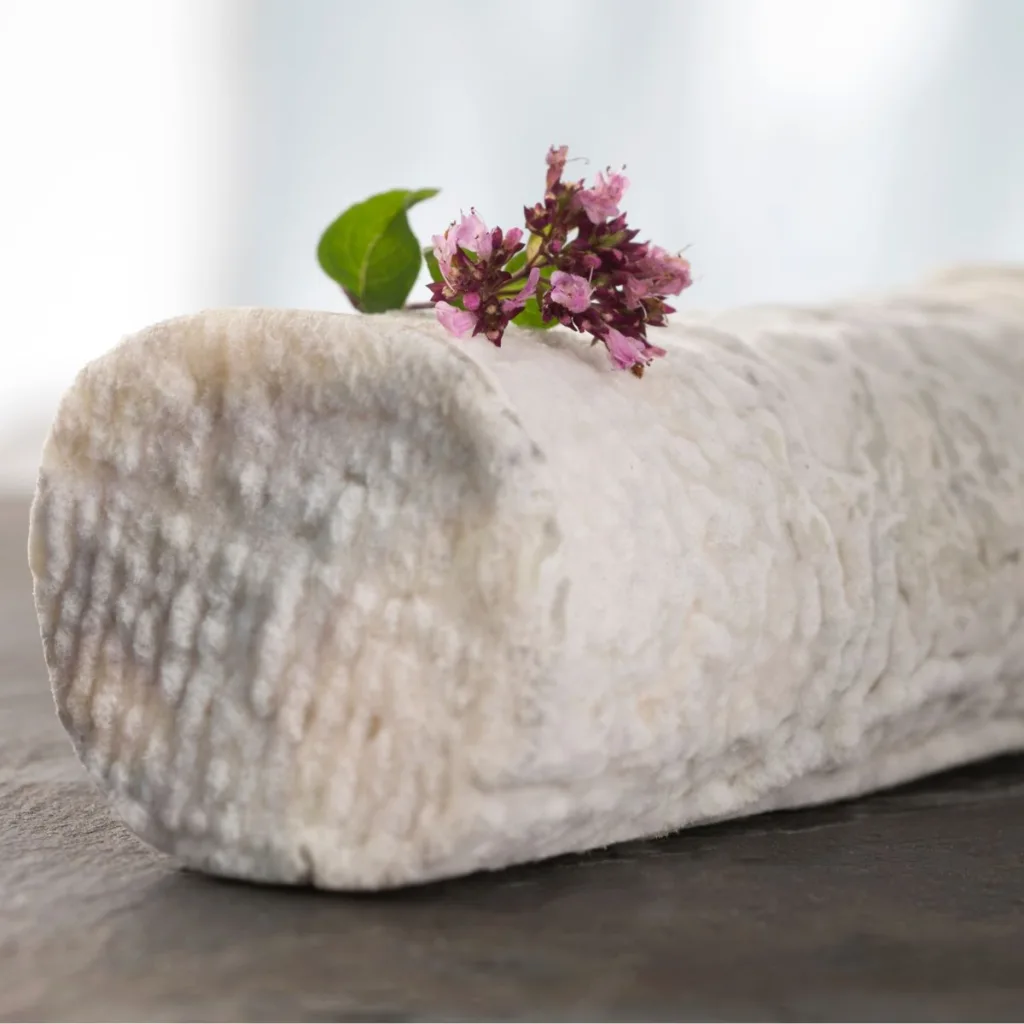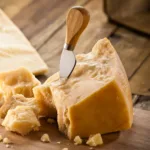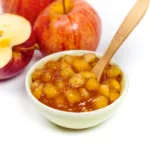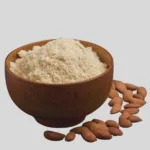Discovering the perfect Parmesan cheese substitute can transform your cooking, offering both dairy and non-dairy alternatives to suit any dish. From the tang of Pecorino Romano to the crunch of toasted breadcrumbs, people love to debate what is the best substitute for parmesan cheese. There is even a whole Reddit thread dedicated to debated Parmesan substitutes!
But in this post, we make it easy for you. Dive into this guide to find the ideal swap for your next culinary creation, ensuring every meal is deliciously seasoned.Pros and Cons of Parmesan Substitutes.
Personal Experience Substituting Parmesan Cheese
As someone who loves to experiment in the kitchen, I’ve found that using a Parmesan substitute can be both a blessing and a challenge. On the positive side, substitutes like nutritional yeast or vegan Parmesan alternatives offer a wonderful solution for those with dietary restrictions, such as vegans or those lactose intolerant, allowing everyone to enjoy a cheesy flavor in their meals.
With that said, I have found a few downsides:
- The flavor profile of a substitute often lacks the depth and complexity that true Parmesan brings to a dish.
- Parmesan’s unique nutty and salty taste and its ability to melt and blend into dishes are hard to replicate fully.
- Not all cheeses melt the same. According to Serious Eats, this is because of differences in their composition. The melting characteristics of cheese are influenced by factors such as temperature, fat content, water content, and protein network. Young, high-moisture cheeses like mozzarella, Taleggio, brie, Gruyère, Emmental, and Jack are known for their reliable melting properties due to their balance of water and fat. On the other hand, drier grating cheeses like Parmesan or Pecorino-Romano, which have lost much of their moisture through evaporation and have aged proteins that form tighter clumps, often separate into clumps or break when melted.
- The texture of substitutes can differ significantly, affecting the final presentation and mouthfeel of the recipe. Despite these cons, the exploration of substitutes has pushed my culinary creativity, finding new ways to achieve that beloved Parmesan effect in my dishes.
What is Parmesan cheese?
Parmesan cheese, known in Italy as Parmigiano Reggiano, is a hard, granular cheese that is one of the culinary world’s most treasured ingredients. Crafted from cow’s milk, this cheese boasts a rich history deeply rooted in the traditions of Italian cheesemakers. According to Parmigiano Reggiano guidelines, the cheese is produced under strict guidelines in certain regions of Italy, ensuring its quality and authenticity.
Italians have long revered Parmesan cheese for its intense flavor and versatility in the kitchen. Its nutty, slightly salty taste and crumbly texture make it an ideal topping for a variety of pasta dishes, enhancing flavors and adding a touch of Italian craftsmanship to every bite. Beyond pasta, Parmesan is also a popular choice for grating over salads, soups, and risottos, offering a delightful contrast in flavors and textures.
What Does Parmesan Taste like?
Parmesan cheese (particularly Parmigiano Reggiano), offers a complex flavor profile that is highly valued in culinary applications. It’s known for its deeply savory, nutty, and slightly salty taste, which is accompanied by a rich umami character. This umami quality makes Parmesan an excellent choice for enhancing the depth and richness of dishes without overpowering other ingredients.
As Parmesan ages, its flavor becomes more pronounced and multifaceted. Younger Parmesan may have a milder, creamier taste, while aged Parmesan (aged 24 months or more) develops sharper, more intense flavors, often described as having hints of spice, toasted nuts, and even dried fruit. The texture also evolves, becoming more crumbly and granular, which allows it to melt and blend into dishes.
Cheapest Parmesan Substitute Options
Unless you find yourself an exceptional deal on Parmesan cheese, this type of cheese can be pricey. True Parmesan Reggiano (see below) takes time to make, and time equals money. That’s why it’s often one of the more pricier cheeses in the case. But according to Bon Appetit, you have options for cheaper parm alternatives. They recommend: Piave, Pecorino Romano, Grana Padano. We’ll cover each of the cheeses below.
Parmesan vs Parmigiano Reggiano
The nuanced world of Italian cheeses presents a fascinating study in flavor, tradition, and geographical significance, especially when exploring the differences between Parmesan and Parmigiano Reggiano. While these terms are often used interchangeably outside Italy, they represent distinct products with unique characteristics and origins.
The Authentic Parmigiano Reggiano
Origin and Production: Parmigiano Reggiano is a testament to Italian cheesemaking artistry, protected under the PDO (Protected Designation of Origin) status. This designation ensures that the cheese is produced in specific areas of Italy, including Parma, Reggio Emilia, Modena, and parts of Mantua and Bologna. The rigorous standards govern everything from the local cow’s milk used to the traditional methods of production and aging.
Flavor Profile: Aged a minimum of 12 months, Parmigiano Reggiano develops a complex, rich flavor and a granular texture that’s both crumbly and melts away in the mouth. It’s celebrated for its depth of taste—nutty, salty, and umami—with older cheeses (24-36 months) offering even more intensity and flavor nuances.
The Versatile Parmesan
Global Interpretation: Outside Italy, “Parmesan” broadly refers to cheeses inspired by Parmigiano Reggiano but not confined to the same stringent PDO regulations. This allows for a wider variation in production techniques, milk sources, and aging processes, contributing to a range of flavors and textures. Parmesan cheeses may not match the complexity of Parmigiano Reggiano but still offer a versatile and accessible option for cheese lovers.
Taste and Texture: Generally, Parmesan has a milder flavor and a more consistent texture than its Italian counterpart. It’s designed to be an all-purpose cheese, suitable for grating over a wide array of dishes, from pizzas to pastas and beyond.
How to Use each (and Preference)
Parmigiano Reggiano in Cuisine: True Parmigiano Reggiano is often featured where its distinctive taste can be the star—finely shaved over fresh salads, stirred into creamy risottos, or grated over hot pasta dishes, enhancing them with its unmistakable flavor.
Using Parmesan in the Kitchen: More widely available Parmesan varieties serve as a staple in kitchens around the world, praised for their adaptability and role in elevating everyday cooking. While it may lack the PDO cheese’s nuanced flavor, it still brings a delightful cheesy note to numerous recipes.
Top Parmesan Cheese Substitutes (Dairy)
Finding the right substitute for Parmesan cheese can ensure your dishes retain a similar depth of flavor and texture when the original isn’t available. Here are some top dairy substitutes, why they work well, and how best to use them:
Pecorino Romano
Why It’s a Great Substitute: Pecorino Romano is a hard, salty Italian cheese made from sheep’s milk. It’s sharper and saltier than Parmesan but offers a similar texture and umami flavor.
Best Recipes For: Ideal in pasta dishes, soups, and salads where its bold flavor can stand out.
Ratio Instructions: Use a 1:1 ratio when substituting for Parmesan, but consider reducing other salty ingredients in the recipe.
Grana Padano
Why It’s a Great Substitute: Grana Padano is similar to Parmesan but slightly milder and less crumbly. Made from cow’s milk, it offers a similar nutty and savory profile.
Best Recipes For: Works well in risotto, pasta dishes like Penne Pomodoro, or as a topping for salads.
Ratio Instructions: Substitute in a 1:1 ratio with Parmesan.
Feta Cheese
Why It’s a Great Substitute: Feta adds a tangy and salty touch to dishes. While softer and more crumbly, it can bring a unique twist to recipes.
Best Recipes For: Best used in salads, Mediterranean dishes, and as a garnish rather than in recipes requiring melting.
Ratio Instructions: Use sparingly, start with half the amount of Parmesan called for, and adjust to taste due to its stronger flavor.
Piave Cheese
Why It’s a Great Substitute: Piave is a hard, cow’s milk cheese from Italy, known for its sweet and full-bodied flavor. Aged Piave has a dense texture and a slightly sweet and nutty flavor, reminiscent of Parmesan but with its own distinct character.
Best Recipes: Piave shines in dishes where its unique flavor profile can complement the overall taste without overwhelming. It’s perfect for grating over pasta, risotto, and salads, as well as being a standout addition to cheese boards.
Ratio Instructions: Substitute Piave for Parmesan in a 1:1 ratio. Its versatile flavor profile means you don’t need to adjust other ingredients to accommodate the swap, making it an effortless substitute in your favorite recipes.
Reggianito
Why It’s a Great Substitute: This Argentine cheese is inspired by Parmigiano Reggiano, offering a hard texture and salty, nutty flavor that’s similar but more intense.
Best Recipes For: Grate over pasta, and soups, and use in dishes where a bolder cheese presence is desired.
Ratio Instructions: Use a 1:1 ratio, but taste as you go since it can be saltier.
Asiago Cheese
Why It’s a Great Substitute: Asiago provides a range of flavors from sweet to sharp depending on its age. Young Asiago is smooth and sweet, while aged Asiago is crumbly and more similar to Parmesan.
Best Recipes For: Aged Asiago is great for grating over dishes, while younger Asiago can be melted into sauces.
Ratio Instructions: Use aged Asiago in a 1:1 ratio for a similar texture and taste to Parmesan.
Goats Cheese
Why It’s a Great Substitute: Goat’s cheese offers a creamy texture and a tangy flavor. While it differs significantly from Parmesan’s hard texture, it can add a delightful creaminess and flavor to dishes.
Best Recipes For: Best used in salads, spread on bread, or in dishes where its creaminess can be a feature rather than a drawback.
Ratio Instructions: Since goat’s cheese is softer and tangier, use a smaller amount initially and adjust based on the desired flavor and consistency.
Top Dairy-Free Substitutes for Parmesan Cheese
Nutritional Yeast
Why It’s a Great Substitute: Nutritional yeast is a deactivated yeast known for its cheesy, nutty flavor, making it a popular vegan substitute for Parmesan. It’s rich in B vitamins and provides a similar umami profile.
Best Recipes For: Sprinkle over pasta dishes, popcorn, and salads, or incorporate into sauces and soups for a cheesy flavor.
Ratio Instructions: Start with a small amount and adjust to taste. Generally, a tablespoon of nutritional yeast can replace an equal amount of Parmesan.
Olives
Why It’s a Great Substitute: Olives offer a salty, briny flavor that can mimic the savory quality of Parmesan in many dishes. They bring a Mediterranean flair that complements a wide range of recipes.
Best Recipes For: Chopped olives are best in pasta sauces, salads, and as a topping on pizzas.
Ratio Instructions: Use chopped olives to taste, considering their saltiness and the flavor profile of your dish.
Capers
Why It’s a Great Substitute: Capers, with their tangy and salty flavor, offer a burst of brightness that can stand in for Parmesan’s salty and umami notes, especially in Mediterranean dishes.
Best Recipes For: Ideal in pasta dishes, salads, and as a garnish for fish or chicken recipes.
Ratio Instructions: Adjust capers to taste, starting with a teaspoon for dishes that would normally call for a sprinkle of Parmesan.
Vegan Parmesan Cheese
Why It’s a Great Substitute: Vegan Parmesan cheese is specifically designed to replicate the flavor and texture of traditional Parmesan, making it an easy direct substitute. Some of the best vegan Parmesan cheese is made from cashews or walnuts.
Best Recipes For: Use exactly as you would Parmesan: over pasta, in salads, and on pizzas.
Ratio Instructions: Substitute vegan Parmesan for dairy Parmesan in a 1:1 ratio.
Sun-Dried Tomatoes
Why It’s a Great Substitute: Sun-dried tomatoes provide a tangy, sweet, and savory taste that can add depth to dishes, similar to the umami quality of Parmesan.
Best Recipes For: Great in pasta, salads, and sandwiches, or blended into spreads and sauces.
Ratio Instructions: Use a small amount of chopped or pureed sun-dried tomatoes to taste, as their flavor is concentrated.

Sea Salt
Why It’s a Great Substitute: While not offering the complexity of Parmesan, a pinch of sea salt can enhance the natural flavors of your dish, providing a simple boost in savory notes.
Best Recipes For: A finishing touch on dishes where you might miss the salty edge of Parmesan.
Ratio Instructions: Use sparingly; a light sprinkle is often enough to elevate the dish without overwhelming it.
Toasted Breadcrumbs
Why It’s a Great Substitute: Toasted breadcrumbs can add a satisfying crunch and a golden, nutty flavor to dishes, offering a texture and savoriness that somewhat mirrors the role of grated Parmesan. Their ability to absorb and impart flavors makes them a versatile substitute in a culinary context.
Best Recipes For: They’re particularly effective as a topping for baked pasta, gratins, and roasted vegetables. Toasted breadcrumbs also work well in salads that could benefit from a crispy element, or in any dish where you might miss the textural contrast provided by grated Parmesan.
Ratio Instructions: If Parmesan is used primarily for topping, toasted breadcrumbs can be used in a 1:1 ratio. However, if Parmesan is integral to the dish’s flavor, you might want to combine the breadcrumbs with another umami-rich ingredient like nutritional yeast or a dash of sea salt. Adjust the quantity to taste, starting with a light sprinkle and adding more as needed to achieve the desired flavor and texture.
More Substitute Options
11 Best Gruyere Substitute Options
Best Red Wine Vinegar Substitutes
13 Almond Meal Substitutes
Have questions or suggestions about what you can substitute for Parmesan cheese? Leave them in the comments below.

